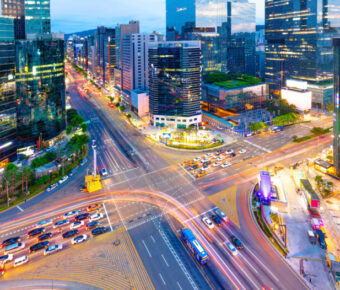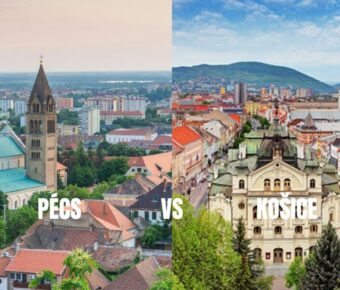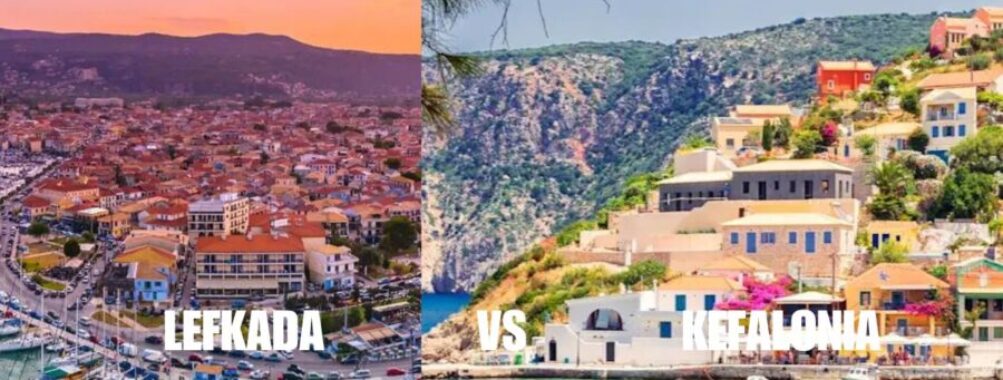
Lefkada vs Kefalonia Travel: Which Ionian Island Is Right for You?
Picking between Lefkada and Kefalonia? It’s not just about which one looks better in photos—both are jaw-dropping, but the vibe and experience couldn’t be more different. If you crave wild beaches and a splash of luxury, Kefalonia‘s your place; if you want easy access, epic cliffs, and a punch of local flavor, Lefkada takes the crown.
I’ve bounced between these two by ferry more than once, and honestly, every time it’s like landing in a new country. They share the same Ionian Sea, but the energy? Worlds apart.
Lefkada feels compact and connected, thanks to that rare road link to mainland Greece. One minute you’re sipping coffee in a sleepy mountain village, the next you’re diving into turquoise water under limestone cliffs.
Kefalonia’s a sprawl. Longer drives, secret coves, and a slower rhythm that kind of demands you chill out—if you let it, anyway.
Table of Contents
- Key Takeaways
- Key Differences Between Lefkada and Kefalonia
- Location and Accessibility
- Island Size and Geography
- Atmosphere and Vibe
- Beaches and Natural Wonders
- Iconic Beaches
- Unique Natural Attractions
- Scenic Landscapes
- Getting There and Getting Around
- Air and Road Connections
- Ferry and Island-Hopping Options
- Where to Stay: Towns and Accommodation
- Best Areas in Lefkada
- Top Places in Kefalonia
- Things to Do and See
- Outdoor Activities
- Cultural and Historical Sites
- Food, Drink, and Local Cuisine
- Traditional Dishes
- Local Wines and Specialties
- Nightlife and Evening Experiences
- Lively Hotspots
- Relaxed Nightlife
- Frequently Asked Questions
- What unique attractions distinguish Lefkada from Kefalonia for travelers?
- Which island offers better beaches, Lefkada or Kefalonia, and what are their distinct characteristics?
- Can you compare the culinary experiences between Lefkada and Kefalonia?
- How does the nightlife in Kefalonia contrast with that of Lefkada?
- What are the transportation options available between Lefkada and Kefalonia?
- In terms of natural beauty and outdoor activities, how do Lefkada and Kefalonia differ?
- Book Your Dream Experience
- More Travel Guides
Key Takeaways
- Kefalonia: more diverse beaches, fancier stays
- Lefkada: easier to reach, stronger local scene
- Both: scenery that’ll fill your camera roll for weeks
Key Differences Between Lefkada and Kefalonia
These islands sit a short ferry ride apart, but man, they don’t feel the same once you’re there. One’s known for showstopper beaches and easy access, the other sprawls out with wild landscapes and a livelier after-dark scene.
Location and Accessibility
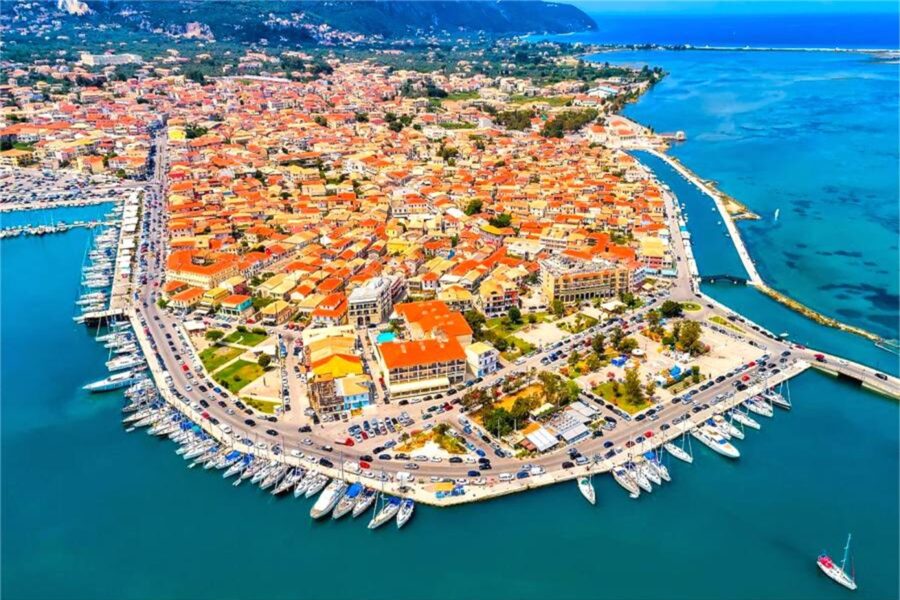
Lefkada’s got a trick up its sleeve: you can drive right in from mainland Greece. There’s a causeway and a bridge connecting it to Aetolia-Acarnania, so you don’t have to mess with ferries or flights.
If you’re coming from Athens or Thessaloniki, just hit the road and you’re there.
Kefalonia? A bit more of a trek. You’ll need to grab a ferry from places like Patras or Killini, or catch a flight straight into Kefalonia International Airport. That extra step keeps things a bit quieter—at least outside of peak season.
Kefalonia offers more ferry links to Zakynthos and Ithaca. Lefkada’s boats mostly head to smaller neighbors like Meganisi.
If you hate travel hassles, Lefkada’s road access is a gift.
Island Size and Geography
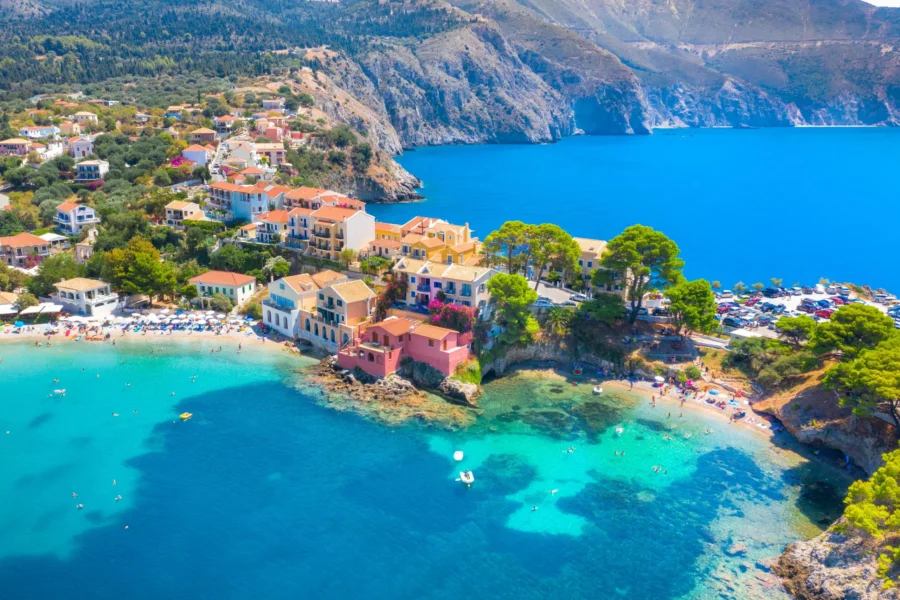
Kefalonia’s the Ionian giant. You’ll feel it driving those long, winding roads past Mount Ainos and through quiet, hillside villages. There’s always another corner to explore.
Lefkada’s tighter. You can zip from east to west in under an hour, so it’s easy to stay put and still see most of the island. The west coast? All cliffs and turquoise drop-offs.
Kefalonia’s coastline is a patchwork—pebbly beaches, sandy coves, wide-open bays. Lefkada’s beaches get all the Instagram love, but Kefalonia’s vineyards and cypress forests inland? Unforgettable.
Atmosphere and Vibe
Lefkada leans chill, especially outside Nidri (the busiest resort). Villages like Agios Nikitas keep things slow and sweet. Nights tend to revolve around long taverna dinners, not wild parties.
Kefalonia dials it up a notch. Argostoli and Lixouri buzz late, with bars and more nightlife options. It’s not Mykonos-level wild, but you won’t get bored after dark.
If you’re seeking peace, Lefkada’s smaller scale and relaxed pace might feel like home. Want a little buzz with your beach days? Kefalonia’s got you.
Beaches and Natural Wonders
Lefkada and Kefalonia both sit in the Ionian Sea, and honestly, their coastlines are reason enough to visit. Think crystal-clear water, cliffs that drop straight into the blue, and wild spots that feel barely touched by humans.
Each island brings its own beat—windy shores, hidden pine-shaded coves, you name it.
Iconic Beaches
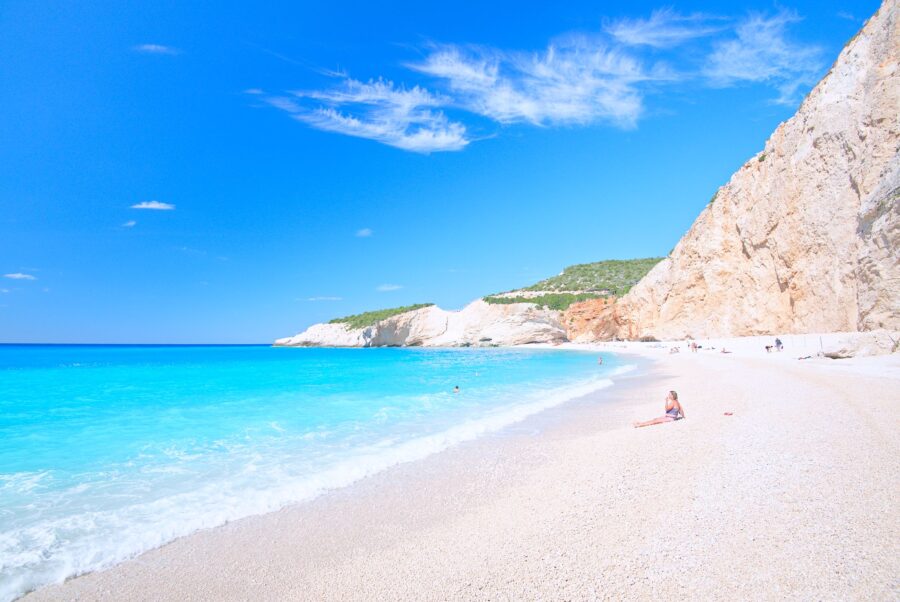
If you’ve seen that postcard of Greece with blinding white cliffs and wild blue water, odds are it’s Porto Katsiki on Lefkada. It’s gorgeous, but you’ll have to tackle a lot of steps down the cliff.
Egremni Beach is even tougher to reach, but if you make the trek, you might have the place almost to yourself.
Kefalonia’s showstopper is Myrtos Beach—steep cliffs, pebbles instead of sand, and water so blue it almost looks fake. I’ve lost whole afternoons there just watching the light shift.
Antisamos Beach near Sami is another gem, with green mountains that make it look straight out of a movie.
If you want soft sand, Xi Beach in Kefalonia has reddish sand and shallow water. Good for families or if you just want to wade in and chill.
Unique Natural Attractions
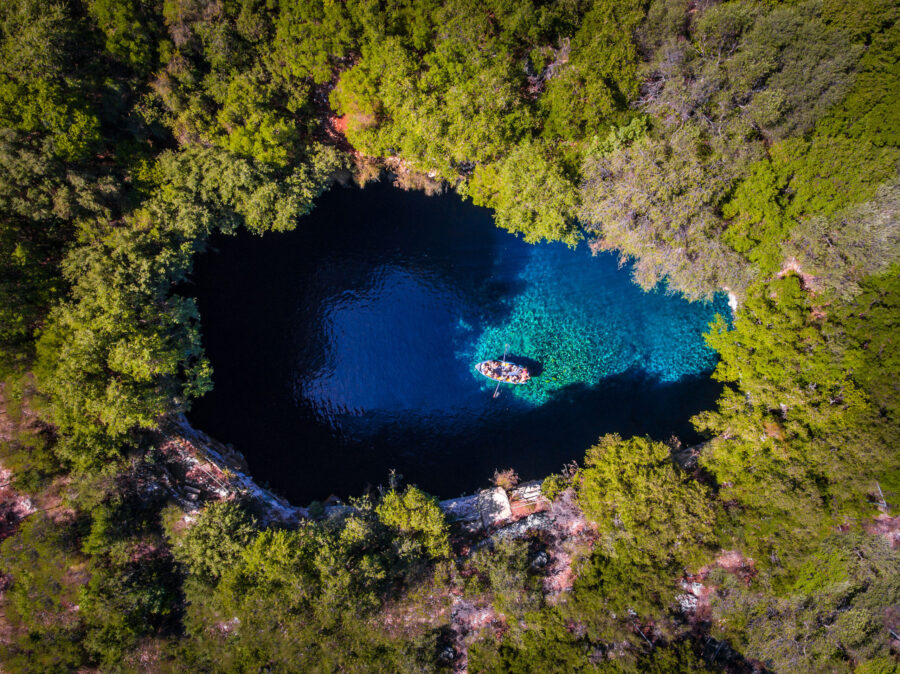
Kefalonia’s Melissani Cave is pure magic. You hop in a little boat, and the water’s so clear it’s almost invisible. When the sun’s overhead, the cave glows in shades of blue you won’t believe.
Nearby, Drogarati Cave is cooler (literally and otherwise), with massive stalactites.
Lefkada doesn’t do caves on that scale, but you’ve got the Dimosari Waterfalls near Nydri. In summer, you can swim under the falls—a sweet break from the heat. There are also natural springs hidden in the hills, worth a detour if you’re road-tripping inland.
Both islands have secret coves only reachable by boat. Renting one for even half a day unlocks a whole new coastline.
Scenic Landscapes
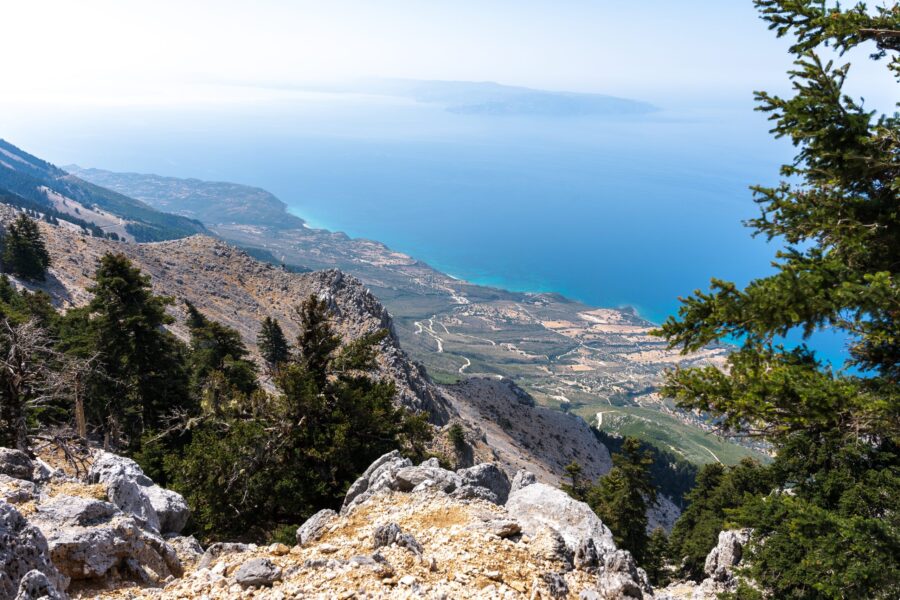
Kefalonia’s all about the mountains. Mount Ainos rules the skyline, and on a clear day, you can spot Zakynthos from the top.
As you drive, you’ll pass vineyards, olive groves, and villages like Assos and Fiskardo—honestly, as photogenic as the beaches.
Lefkada’s west is a study in cliffs plunging into the sea. Inland, you’ll find rolling hills, cypress trees, and villages that barely feel touched by time.
The road from Lefkada Town to Vasiliki? It’s a scenic rollercoaster, with the sea popping into view at every switchback.
If Lefkada’s beaches are too windy, I always head to the east side near Nydri. Calmer water, and the views of tiny offshore islands are straight out of a painting.
Getting There and Getting Around
Getting between Lefkada and Kefalonia isn’t rocket science, but the options are pretty different. Lefkada hooks up to mainland Greece by road, while Kefalonia leans on ferries and flights.
Local buses exist, but if you want to see more than just the main towns, rent a car or a scooter.
Air and Road Connections
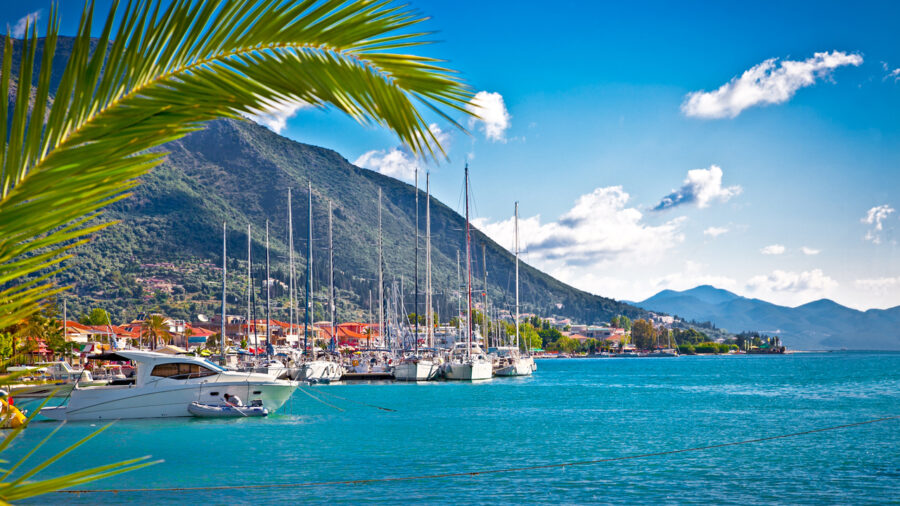
Lefkada doesn’t have its own airport, but you can fly into Aktion National Airport near Preveza. From there, it’s a quick 25-minute drive over the causeway—land, grab a rental, and you’re on the beach in under an hour.
That road link makes Lefkada a breeze to reach, no ferry drama required.
Kefalonia’s got its own international airport, about 8 km from Argostoli. Flights from Athens run year-round, and in summer, there are direct routes from all over Europe. If you want a good deal, check cheap flights ahead of time—summer fills up fast.
Driving in Greece isn’t bad once you get used to the narrow roads. On Lefkada, a car means you can hit Porto Katsiki or anywhere else without waiting for a bus. Kefalonia’s public buses link the main towns, but a lot of beaches and villages are off-route.
Ferry and Island-Hopping Options
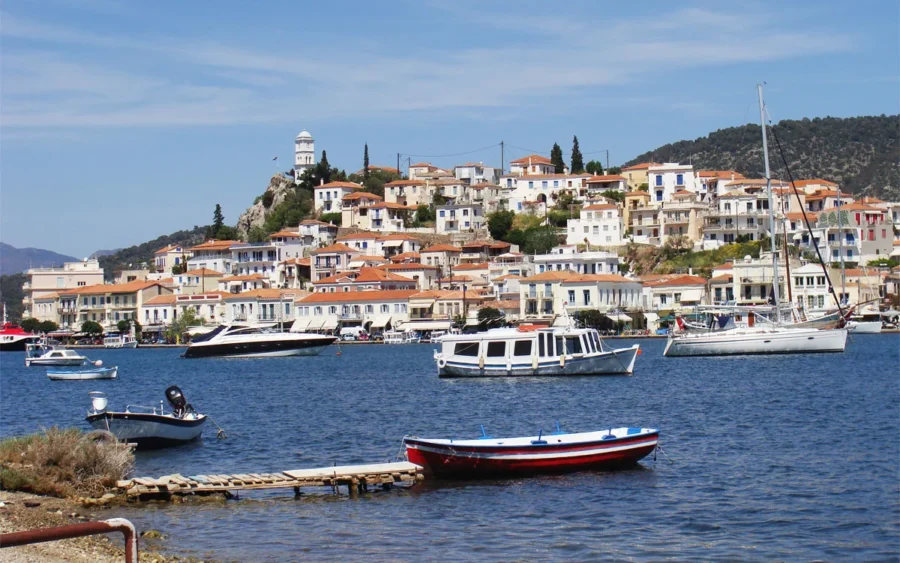
Lefkada’s ferries mostly leave from Nydri, heading to Ithaca or Meganisi in under an hour.
Kefalonia connects to Sami, Poros, and Fiscardo by ferry from Ithaca, Lefkada, Zakynthos, and Killini. Coming from Corfu or Paxi? You’ll probably connect via Igoumenitsa or Patras before catching a ferry south.
The Killini–Lixouri or Poros ferry takes about 1–1.5 hours, depending on the route.
For a quick detour, the Argostoli–Lixouri ferry zips across the bay in about 20 minutes. It’s cheap, runs all day, and saves you a long drive. Island-hopping here isn’t just practical—it’s honestly a great way to see more of the Ionian without feeling rushed.
Where to Stay: Towns and Accommodation
When you’re picking a base, ask yourself: do you want to move around, or just chill in one spot? Some areas make it easy to hit lots of beaches, others lean into nightlife or that sleepy village feel. Where you stay really shapes your trip.
Best Areas in Lefkada
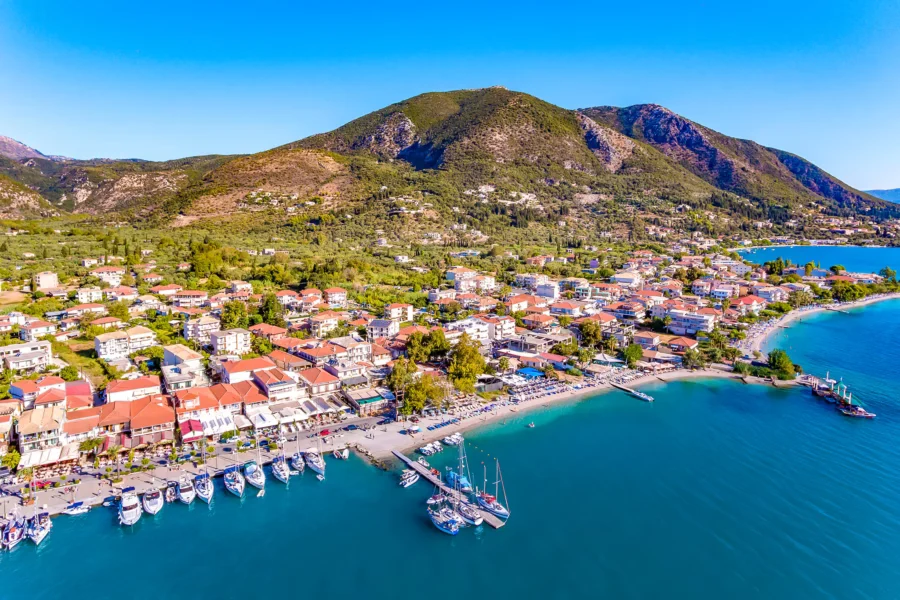
If you want a lively spot with boat trips and plenty of places to eat, Nidri (sometimes spelled Nydri) is the main hub. It’s on the east coast, with ferries to nearby islands and a long line of waterfront tavernas.
You’ll find loads of mid-range hotels and apartments here.
For something quieter but still central, Lefkada Town is great—shops, some nightlife, and easy drives to beaches like Agios Ioannis. Perfect if you’re exploring by car.
Down south, Vasiliki is windsurfing central, with a mix of budget rooms and small resorts. The west coast is more dramatic, with beaches like Porto Katsiki, but you’ll be more isolated.
Options range from basic studios to villas with pools. If you want to be near the water in summer, book early. Here’s a good place to browse Lefkada hotels and apartments.
Top Places in Kefalonia
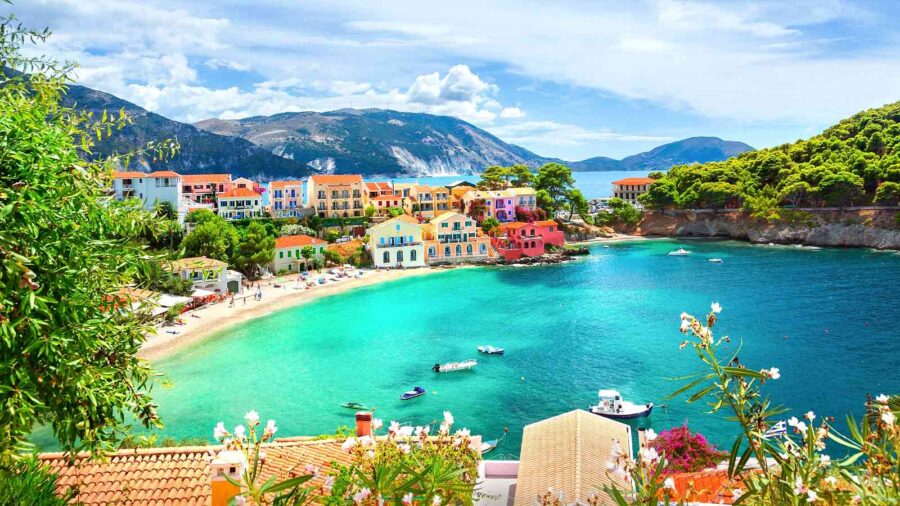
Lassi is a no-brainer if you want sandy beaches, restaurants, and a quick ride from the airport. It’s touristy but super convenient, especially if it’s your first time.
If you’re after that postcard village vibe, Assos is tiny, scenic, and great for couples—just know rooms go fast. Fiskardo, up north, is fancy, with Venetian buildings and a harbor full of yachts.
Families usually pick Skala or Poros on the southeast. Skala’s got a long beach and more nightlife, while Poros is quieter with a working harbor.
If you want a bigger town with shops and a waterfront promenade, Argostoli is the capital and works well year-round.
Kefalonia’s places to stay run the gamut from budget studios to swanky resorts. If you’ve got a car, you’ll have way more options—especially if you want a remote spot but still plan to hop between beaches.
Things to Do and See
Lefkada and Kefalonia both serve up a mix of wild nature and deep history. One day you’re hiking mountain trails, the next you’re poking around ancient castles or ducking into hidden caves.
Each island’s got its own personality, so even similar activities feel different under that Ionian sun.
Outdoor Activities
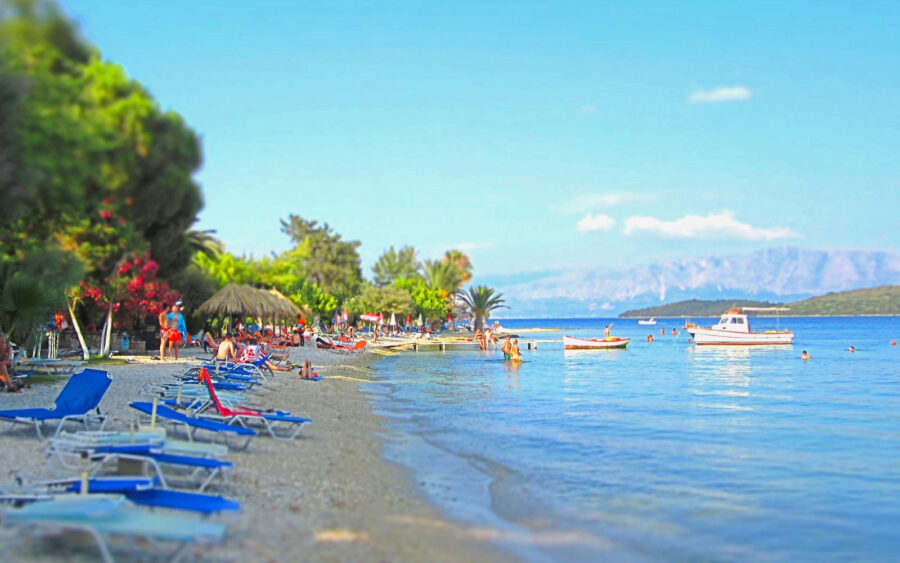
If you’re after beaches, Lefkada’s west coast has some of the most photogenic in Greece—think Porto Katsiki and Egremni. The water’s that unreal turquoise you see on postcards, and the cliffs really make it feel hidden from the rest of the world.
Over on Kefalonia, Mount Ainos calls out if you’re up for a climb or just a winding drive. It’s the tallest peak in the Ionian Islands, wrapped in a forest of rare fir trees.
On a clear day, you can spot Zakynthos from the top. That view? Worth the sweaty hike, trust me.
Water lovers, you’re set. From Nydri in Lefkada, you can hop on boat tours to nearby islets, or even take a spontaneous day trip to Ithaca.
Kefalonia’s coast is kayak heaven—especially around Assos, where little coves hide in plain sight.
Guided adventures and day trips are easy to book if you’d rather let someone else wrangle the logistics. Sometimes, letting a local lead the way is just easier.
Cultural and Historical Sites
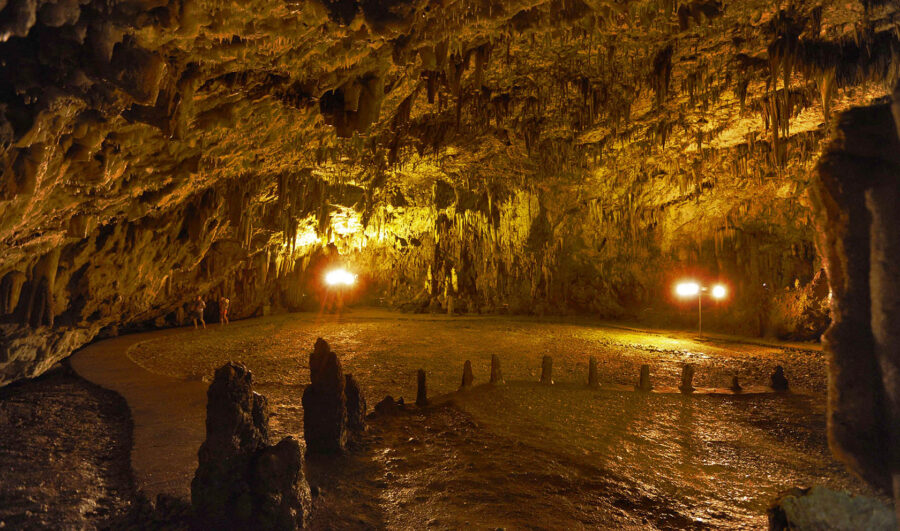
Kefalonia’s Melissani Cave is one of those places that doesn’t look real. Sunlight pours in from above, lighting up the water in this wild, electric blue.
Not far off, Drogarati Cave feels like another world with its massive chambers and all those stalactites.
In Lefkada, the old Agia Mavra Castle stands guard at the island’s entrance. It’s been there since the 14th century, and the fact that it’s not overly restored just adds to the vibe.
You’ll still see rough stone walls and bits crumbling here and there—somehow, that makes it more interesting.
Wandering through the smaller villages on both islands is time well spent.
Fiskardo in Kefalonia keeps its Venetian look, while Lefkada’s mountain villages show off a slower, quieter side of island life.
If you’re pressed for time, local tours can bundle up a few of these spots into one day. Handy if you want to see a lot without racing around.
Food, Drink, and Local Cuisine
Eating here isn’t just about getting full—it’s about tasting what’s been passed down for generations, shaped by sea breezes and mountain air.
The flavors are bold but simple, with olive oil and local produce doing the heavy lifting.
Traditional Dishes
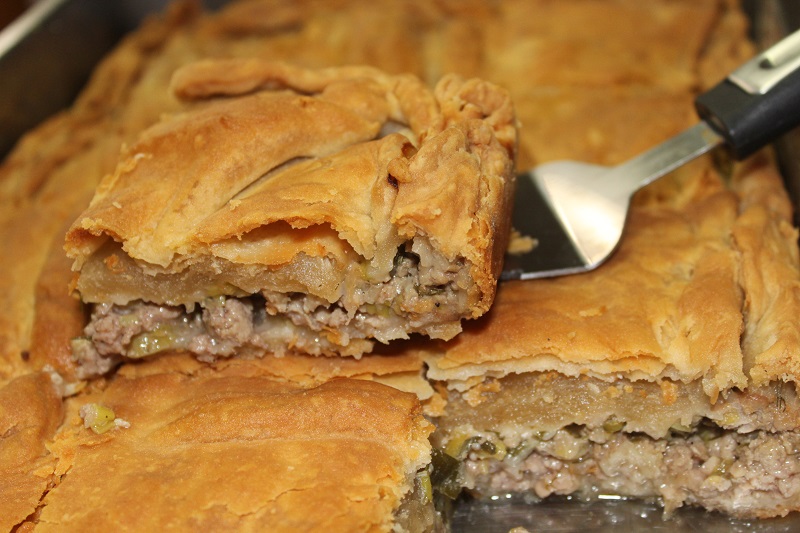
In Kefalonia, you’ll spot kreatopita—a meaty pie, usually beef or pork, slow-cooked with onions and herbs—on just about every menu.
Honestly, it’s the kind of thing that tastes even better after a salty swim.
Seafood is a big deal on both islands, but in Lefkada, look out for bourdeto. It’s a spicy fish stew with a kick from red pepper and garlic.
It pops up more often than you’d expect and really hits the spot if you’re craving something with a bit of heat.
Don’t skip pastitsada either—especially in a traditional taverna.
That’s pasta with slow-braised beef or rooster in a cinnamon-spiced tomato sauce. It’s rich, filling, and the kind of comfort food that lingers all afternoon.
Menus change with the seasons, so don’t be shocked if you sit down and find something new.
That’s half the fun, right? You never quite know what you’ll get until you’re there.
Local Wines and Specialties
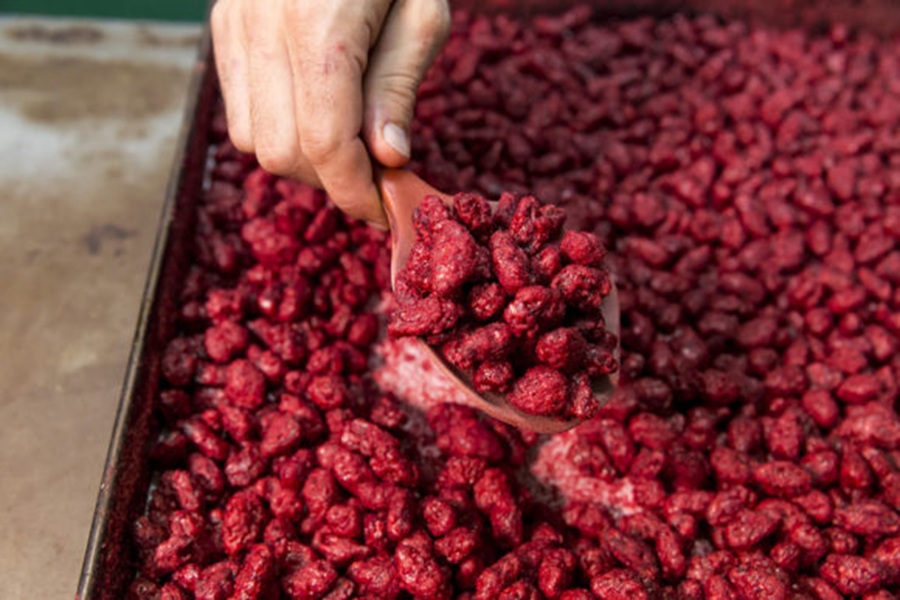
Kefalonia is known for its Robola wine—a crisp white that pairs perfectly with grilled fish or lighter meats.
You can visit little wineries inland, and the winemakers usually pour you a glass before you’ve even said hello.
Lefkada’s got Vertzamo, a red wine you probably won’t find outside the island.
It’s smooth, a little spicy, and goes down easy with lamb or anything tomato-y.
If you want something sweet, try Kefalonia’s mandoles—caramelized almonds, usually sold in paper bags at markets.
They’re addictive, and honestly, they make the best beach snack.
Lefkada leans into spoon sweets made from local fruit. You’ll get them with a cold glass of water after a meal—a simple tradition, but one you’ll probably wish you could bring home.
Nightlife and Evening Experiences
Evenings on these islands? They’re not all the same.
One place buzzes with music and crowds, the other slows things down with quiet bars and long waterfront walks.
Lively Hotspots
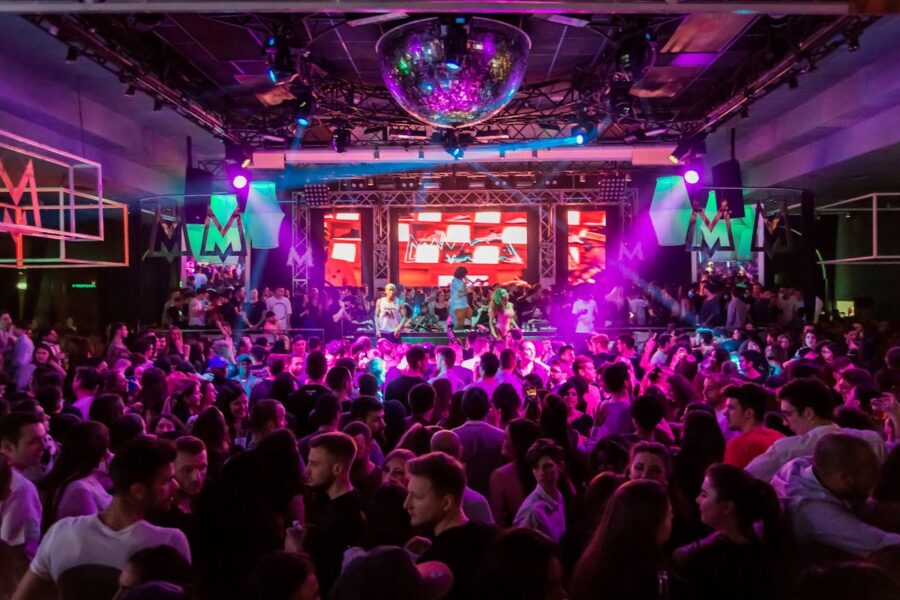
If you’re chasing energy, Kefalonia delivers. In Argostoli, bars stay open well past midnight, especially along the waterfront where locals and travelers mingle.
Skala is smaller but still lively, with cocktail bars and live music that keep things social.
Come summer, beach bars in Lassi throw DJ nights.
You might start with dinner at a taverna and end up in a bar where the music just keeps getting louder.
Kefalonia’s nightlife isn’t wild like Mykonos, but it’s steady and varied.
You can bounce from a quiet wine bar to a dance floor with barely any effort.
The island’s size means more options, but you’ll need a car to hop between towns. That’s a bit of a hassle, but also kind of fun if you’re up for it.
Relaxed Nightlife
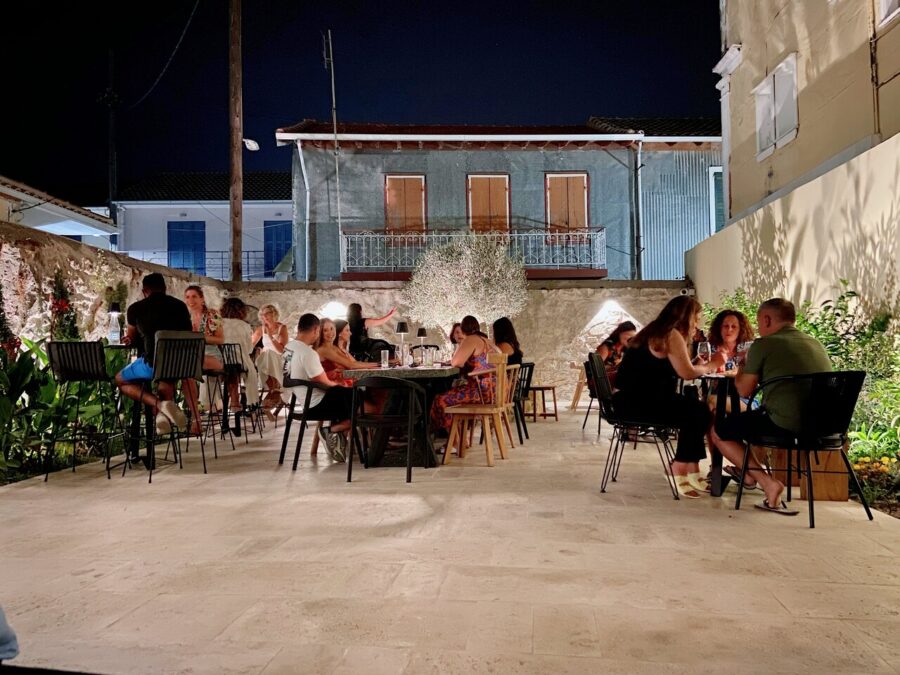
Lefkada prefers a gentler vibe after dark. In Lefkada Town, you can sip wine at a small café, watch the boats bob in the marina, and still get to bed before midnight.
Bars here close earlier, so it’s more about conversation than dancing.
In Nydri, the action’s on the seafront promenade.
You can stroll past open-air restaurants, grab a drink, and wander the pier under soft lights.
It’s low-key, but honestly, that’s the charm.
Beach towns like Vassiliki run at the same pace—maybe a bit of live music, but nothing too rowdy.
You’ll probably end up chatting with the same bartender every night, and by the end of your stay, you’ll know each other by name.
If you want your evenings to feel unhurried, this is your place.
Frequently Asked Questions
Lefkada and Kefalonia might sit in the same slice of turquoise Ionian, but once you land, they’re worlds apart.
One gives you dramatic cliffs and wind-whipped beaches, the other hides coves behind mountains and pine. Your camera, your taste buds, and your plans? They’ll spot the difference right away.
What unique attractions distinguish Lefkada from Kefalonia for travelers?
Lefkada’s “wow” moments are those cliffside beaches like Porto Katsiki, plus the Dimosari Waterfalls tucked up in the hills near Nydri.
You can even drive right onto the island thanks to its floating bridge—no ferry hassle.
Kefalonia’s highlights are more about geology. Melissani Lake Cave glows blue in a way you can only see from a boat inside, and Drogarati Cave’s echoing chambers are just plain cool.
If you like a little mystery in your landscape, Kefalonia’s your spot.
Which island offers better beaches, Lefkada or Kefalonia, and what are their distinct characteristics?
Lefkada’s beaches? Bold.
Bright blue water, white sand or pebbles, and cliffs that make you feel tiny (in the best way).
The west coast has the best photo ops, but reaching some of them means hiking or a ton of stairs.
Kefalonia’s beaches are all over the map. Myrtos Beach is the showstopper with its sweeping curve of white pebbles, but you’ll also find red-sand Xi Beach and hidden coves like Fteri.
A lot of them are quieter, especially if you need a boat to get there.
Can you compare the culinary experiences between Lefkada and Kefalonia?
Lefkada’s food feels lighter and more coastal—lots of fresh fish, olive pies, and those lentils from Eglouvi that locals can’t stop talking about.
You’ll see plenty of seaside tavernas serving grilled dishes with just a squeeze of lemon.
Kefalonia leans heavier.
The meat pie (kreatopita) is everywhere, and the island’s Robola white wine is a perfect match for seafood.
I still remember sitting in a little village taverna with a plate of garlic dip (aliada) so strong it stuck with me for hours—in a good way.
How does the nightlife in Kefalonia contrast with that of Lefkada?
Lefkada’s got more of a summer buzz, especially in Nydri and Lefkada Town.
Beach bars play music late, and you’ll find plenty of places for cocktails right by the water.
Kefalonia’s nightlife is quieter.
Argostoli has a few lively bars, but most nights end with a slow dinner and maybe a stroll along the harbor.
If you’re after clubs or big parties, Lefkada’s the better call.
What are the transportation options available between Lefkada and Kefalonia?
There’s no direct bridge or regular ferry between the two, so you’ll need to connect via other islands or the mainland.
In summer, a few small ferry routes run between nearby ports, but not every day.
Usually, folks drive or take a bus to a mainland port, then hop a ferry to Kefalonia.
It’s a bit of a detour, so plan your timing if you want to visit both.
In terms of natural beauty and outdoor activities, how do Lefkada and Kefalonia differ?
Lefkada is a total dream if you’re into wind-powered water sports. Think windsurfing in Vasiliki or chasing the breeze with a kite at Agios Ioannis.
Head inland and you’ll find hiking trails winding through olive groves. Some paths lead you up into the hills, where you might stumble onto a waterfall—perfect for a quick swim if you’re feeling brave.
Kefalonia, on the other hand, just throws more variety at you. I mean, you can hike up Mount Ainos if you’re up for a challenge.
Or maybe you’d rather kayak along those calm coves, or snorkel in bays so clear you’ll lose track of time. Since Kefalonia’s bigger, the drives get a bit epic—every turn seems to surprise you with a new view.

